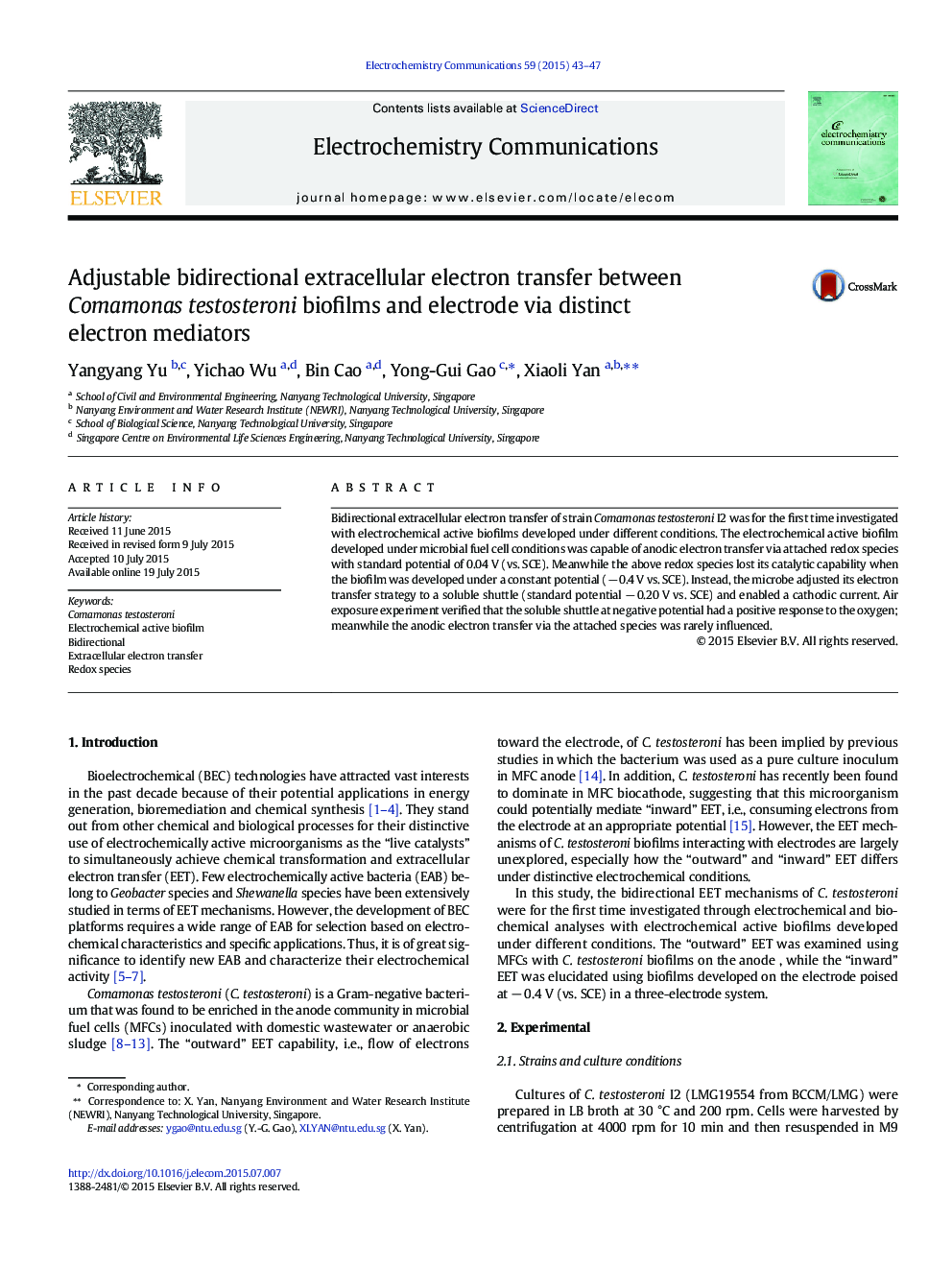| Article ID | Journal | Published Year | Pages | File Type |
|---|---|---|---|---|
| 178862 | Electrochemistry Communications | 2015 | 5 Pages |
•The bidirectional extracellular electron transfer (EET) mechanism of Comamonas testosteroni biofilms was investigated.•The “outward” EET is facilitated by membrane associated redox species (RS I).•The “inward” EET is facilitated mainly by soluble electron shuttle (RS II).•Oxygen can be reduced by RS II while the presence of oxygen hardly influences RS I.•The “inward” EET enhances cell viability and acetate consumption in C. testosteroni biofilms.
Bidirectional extracellular electron transfer of strain Comamonas testosteroni I2 was for the first time investigated with electrochemical active biofilms developed under different conditions. The electrochemical active biofilm developed under microbial fuel cell conditions was capable of anodic electron transfer via attached redox species with standard potential of 0.04 V (vs. SCE). Meanwhile the above redox species lost its catalytic capability when the biofilm was developed under a constant potential (− 0.4 V vs. SCE). Instead, the microbe adjusted its electron transfer strategy to a soluble shuttle (standard potential − 0.20 V vs. SCE) and enabled a cathodic current. Air exposure experiment verified that the soluble shuttle at negative potential had a positive response to the oxygen; meanwhile the anodic electron transfer via the attached species was rarely influenced.
